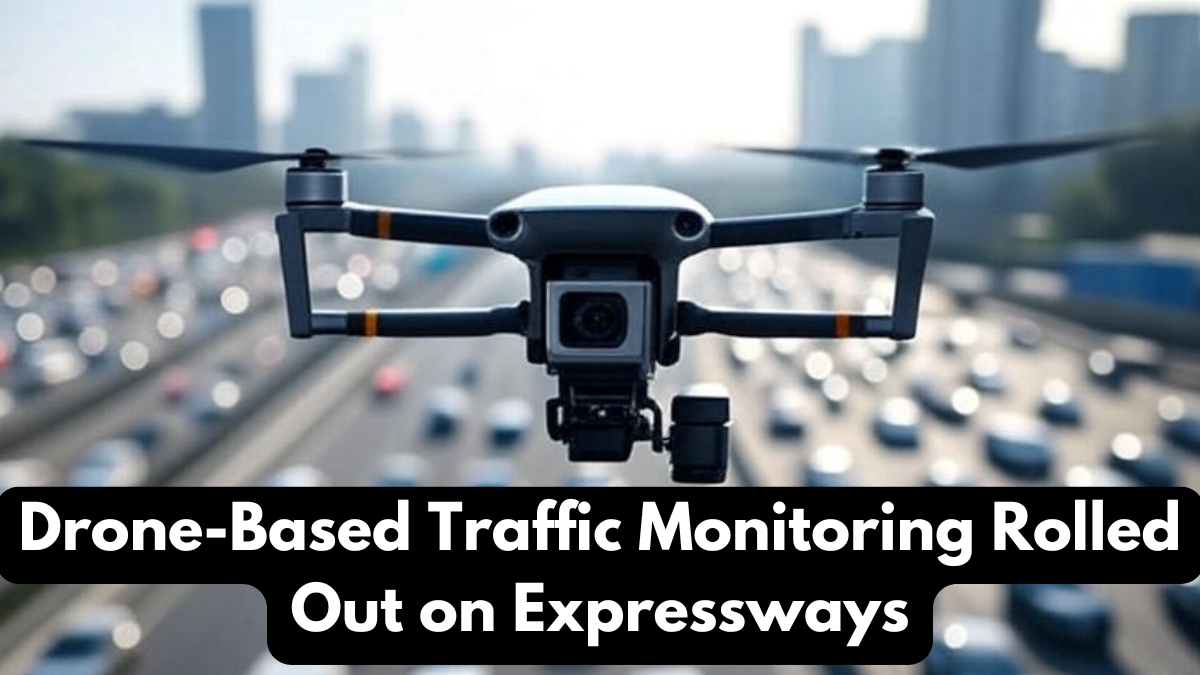Traffic management has always been a challenge on busy roads, but technology is stepping in to provide new solutions. The rollout of Drone Traffic Monitoring on major expressways is a breakthrough that promises safer, faster, and more efficient transportation. Unlike traditional cameras or patrols, drones can cover larger areas in less time, sending real-time data to traffic authorities. This advancement is expected to greatly improve highway safety while reducing congestion and preventing accidents.
Authorities are now turning to drones to monitor traffic density, spot violations, and assist emergency responders. With rising road usage and growing concerns about accidents, the use of drones brings a much-needed technological boost to traffic management.

Why Drone Traffic Monitoring is Essential
Expressways carry thousands of vehicles every day, often leading to overcrowding and higher risks of collisions. Drone Traffic Monitoring plays a vital role in:
- Identifying traffic jams before they escalate
- Detecting reckless driving or violations
- Monitoring accident-prone zones
- Assisting in emergency response and rescue
By providing aerial views, drones eliminate blind spots that fixed cameras cannot cover. The integration of this technology ensures a significant step forward in highway safety.
Advantages of Drone Traffic Monitoring for Highway Safety
The adoption of drones for traffic management has multiple benefits that directly impact highway safety:
- Real-time updates allow authorities to respond quickly
- Reduced dependence on manual monitoring
- Enhanced accident prevention through predictive analysis
- Better coordination with ambulances and police during emergencies
- Cost-effective compared to expanding fixed surveillance infrastructure
These benefits highlight how Drone Traffic Monitoring is changing the way authorities maintain order on busy roads.
Table: Traditional Surveillance vs Drone Traffic Monitoring
| Aspect | Traditional Cameras | Drone Traffic Monitoring |
|---|---|---|
| Coverage Area | Fixed, limited | Wide, mobile, flexible |
| Setup Cost | High installation cost | Moderate, reusable equipment |
| Response Time | Slower, dependent on operators | Faster, real-time aerial updates |
| Accident Detection | Limited to installed locations | Detects across multiple zones |
| Contribution to Safety | Partial improvement | Strong boost to highway safety |
This comparison clearly shows why drones are becoming an indispensable tool for expressway monitoring.
Challenges in Drone Traffic Monitoring
While promising, Drone Traffic Monitoring also faces obstacles. Drones require skilled operators and advanced AI software for analysis. Privacy concerns have been raised by citizens regarding aerial surveillance. Additionally, adverse weather such as heavy rain or fog may limit drone operations.
Governments are working on creating policies that balance public safety with privacy rights. Meanwhile, investments in weather-resistant drones and AI-driven automation are addressing these hurdles.
The Future of Highway Safety with Drones
The introduction of Drone Traffic Monitoring is only the beginning. As AI technology becomes more sophisticated, drones will be able to predict traffic patterns, optimize signal timings, and even guide autonomous vehicles in the future. The long-term integration of drones into road infrastructure is expected to revolutionize highway safety and reduce accident rates drastically.
Key future roles of drones:
- Integration with smart traffic lights
- Early warning systems for congestion
- Supporting autonomous car navigation
- Real-time data sharing with city planners
Conclusion
The implementation of Drone Traffic Monitoring on expressways is a game-changer for modern traffic management. By enhancing surveillance, reducing accidents, and ensuring quicker response times, drones are making roads safer and more efficient. Despite challenges, their role in improving highway safety is undeniable, and with continued innovation, drones will remain a cornerstone of smart transportation systems.
FAQs
What is Drone Traffic Monitoring?
Drone Traffic Monitoring uses drones equipped with cameras and sensors to observe traffic flow, detect violations, and enhance road safety.
How does Drone Traffic Monitoring improve highway safety?
It provides real-time surveillance, reduces blind spots, and ensures faster emergency response, leading to fewer accidents and safer expressways.
Are drones cost-effective for traffic monitoring?
Yes, compared to installing multiple fixed cameras, drones offer wider coverage and can be reused, making them more economical.
What challenges affect Drone Traffic Monitoring?
Privacy issues, weather conditions, and the need for skilled operators are some challenges that authorities are working to overcome.
Can drones predict traffic patterns?
With AI integration, drones are expected to forecast traffic flow, manage congestion, and support autonomous driving in the near future.
Click here to learn more